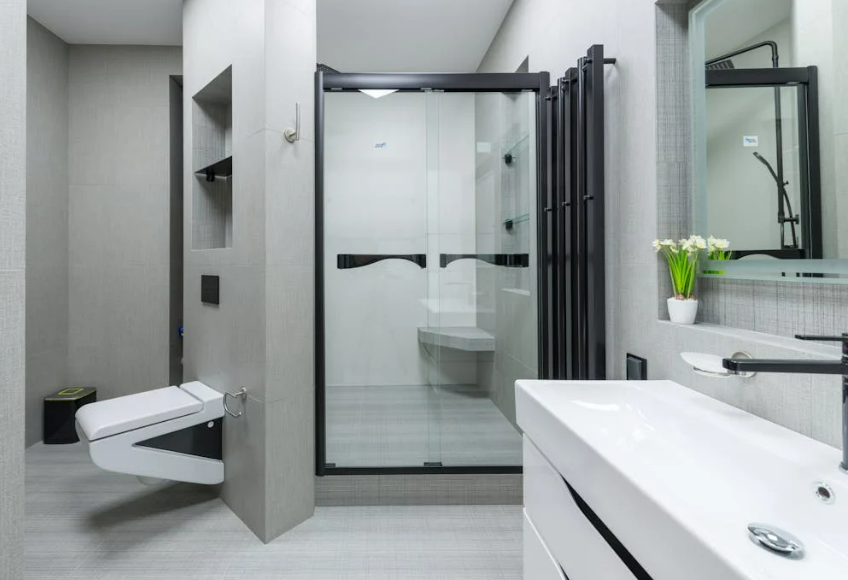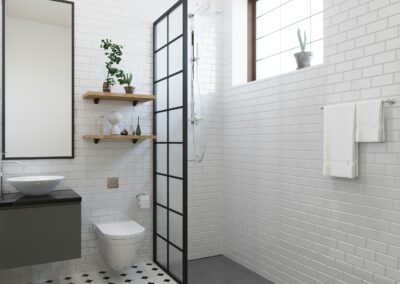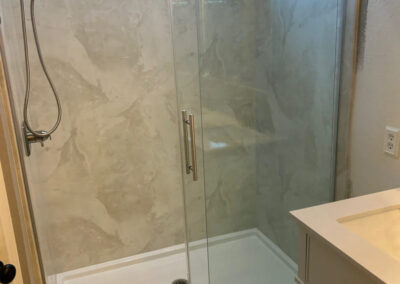In recent years, there’s been a notable shift in how we think about design, especially when it comes to bathrooms. The emphasis is no longer solely on aesthetics or luxury. Instead, there is a growing awareness of the need for inclusive design—spaces that cater to everyone, regardless of age, ability, or mobility. One of the most impactful areas of this evolution is the accessible bathroom, and as we move forward, we are seeing a significant shift toward universal design. But what does the future of accessible bathrooms look like, and why is universal design so important?
What is Universal Design?
Universal design refers to the creation of products and environments that are usable by all people, to the greatest extent possible, without the need for adaptation or specialized design. It is not just about meeting the needs of those with disabilities, but about creating spaces that can be easily accessed and used by people of all ages and abilities.
When applied to bathrooms, universal design means thinking ahead to ensure that spaces are safe, functional, and adaptable for everyone, whether they are using a wheelchair, a walker, or simply navigating the space as an older adult or someone recovering from an injury.
The Increasing Importance of Universal Design in Bathrooms
Bathrooms are personal spaces where we begin and end our days. For many people, having an accessible bathroom means more than just functionality—it is about maintaining independence, dignity, and safety. As the global population continues to age and as disability awareness grows, the demand for more inclusive bathroom designs is on the rise.
What Will the Future Hold for Accessible Bathrooms?
The future of accessible bathrooms is one of innovation, convenience, and inclusivity. Below are some of the advancements and trends we can expect to see in the years to come:
1. Smart Technology and Automation
Incorporating technology into bathroom design is quickly becoming a game changer for accessible spaces. Smart showers, voice-activated faucets, and automatic toilets are already emerging on the market, and this trend is expected to grow. Features like temperature-controlled showers, motion sensor lights, and automatic seat adjustments in toilets make daily bathroom tasks easier, safer, and more convenient for those with mobility challenges.
Voice commands and smart assistants can allow users to control various bathroom features without ever needing to touch a handle or button, reducing physical strain and promoting ease of use for individuals with disabilities or limited dexterity.
2. Seamless and Modular Design
The concept of modular design is becoming increasingly important in universal bathroom spaces. Modular systems allow for easy customization to suit the needs of different users, from wheelchair users to aging individuals. For example, adjustable-height sinks, removable grab bars, and moveable shower seats can be added or adjusted depending on the user’s needs, ensuring long-term usability.
Additionally, low-threshold or zero-threshold showers that allow easy access for both wheelchair users and anyone with limited mobility are becoming more common. These shower designs will evolve to be even more sleek, integrating better water drainage systems, frameless glass enclosures, and low-maintenance materials that also contribute to a minimalist aesthetic.
3. Innovative Materials for Safety and Comfort
In the future, materials used in accessible bathrooms will evolve to offer better safety, comfort, and maintenance. Slip-resistant flooring, for example, will continue to improve, offering a balance of safety and style. Materials like antimicrobial surfaces, water-resistant backing boards, and easy-to-clean non-porous countertops will become standard in accessible bathroom designs.
Technology will also allow materials to be more adaptable to individual needs—adjustable lighting systems that change based on the time of day, for example, can provide better visibility for users with visual impairments or at night.
4. More Inclusive, Sleek Designs
One of the most exciting changes is the blending of functionality and design. In the past, accessible bathrooms were often viewed as utilitarian and less stylish. However, with universal design on the rise, accessible features are seamlessly integrated into bathrooms that look as good as they function.
Sleek, contemporary fixtures like wall-mounted toilets and floating vanities are becoming the norm in accessible bathrooms. These designs don’t just look modern—they also improve accessibility by offering extra clearance underneath, allowing wheelchair users to get closer to the sink or toilet.
5. Aging-in-Place Features
As the global population ages, there is an increasing trend toward aging-in-place design. People want to remain in their homes as they grow older, and designing bathrooms that accommodate aging-related needs is essential. Features like adjustable-height mirrors, grab bars in strategic places, non-slip mats, and low-profile shower bases ensure that bathrooms are not only accessible but can adapt as an individual’s needs change over time.
Bathrooms will increasingly be designed with the understanding that mobility issues can arise at any stage of life, and universal design allows for the seamless addition of safety features when they are needed.
Why is Universal Design Important for the Future?
The future of accessible bathrooms is all about creating spaces where people of all abilities can live comfortably and independently. Universal design ensures that the needs of individuals with disabilities are met while also providing solutions that benefit everyone—regardless of age or physical condition.
Whether it’s through smart technology, customizable features, or the use of high-quality materials, universal design will continue to transform bathrooms into spaces of convenience, safety, and beauty. As we move forward, it’s clear that inclusive design isn’t just a trend; it’s the future of living in a world where everyone has the opportunity to thrive.




